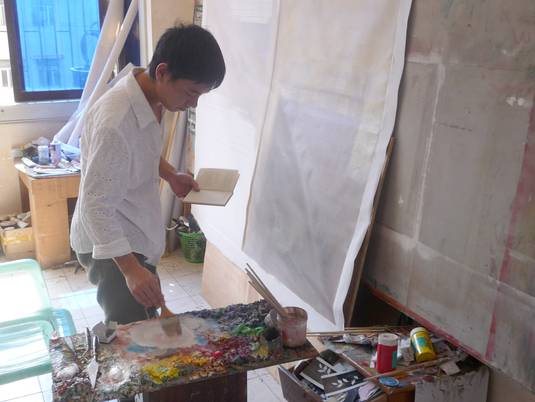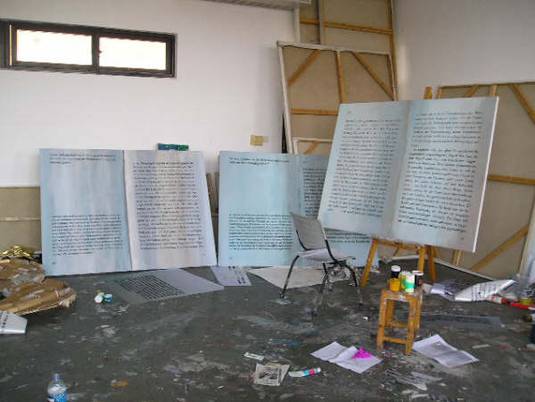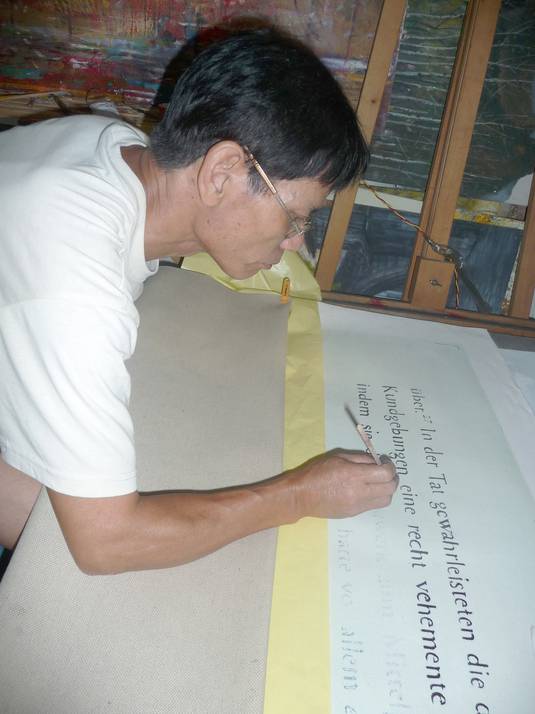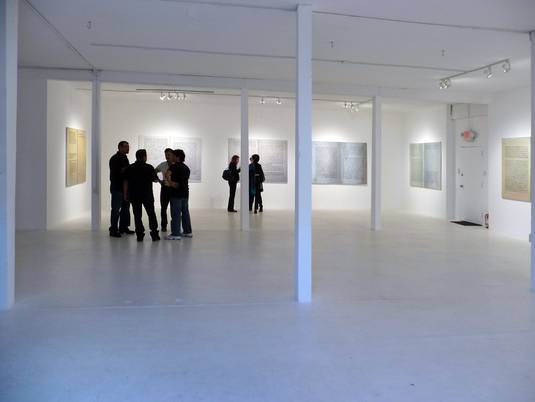The Benjamin Project
with Thomas Adebahr
Diet Gallery, Miami, 2009, He Xiangning Art Museum, Shenzhen, China, 2010
Why do people go to museums – why does the number of visitors to museums increase with every year that passes? In 2009 Google has begun to make paintings by great masters from the world’s leading museums accessible to art lovers via its platform, Google Earth, starting with 15 masterpieces from the Prado in Madrid.
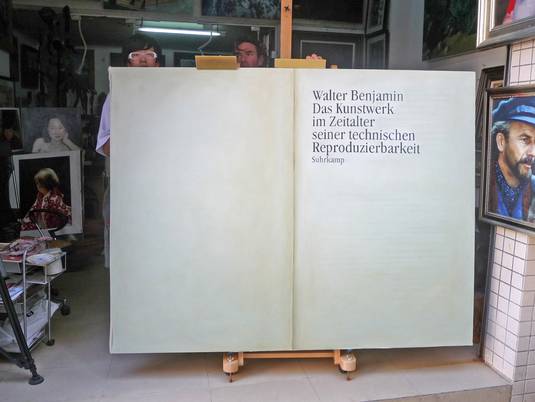
Benjamin Project
Viewers can take note of details of the works that museum visitors can scarcely make out with the naked eye, and may do so relaxing in front of their own home computer screens. They do not have to stand in line for hours for tickets and then have to peer over the heads of others to see the works only incompletely and at a distance. Since the differences between image and reality, original and copy are dissolving, only what is personally experienced counts as real – only what has been made by hand, has an aura. And all who go to museums take photos, make pictures, to make sure of their access to reality, as a reality check on themselves. In their joint projects, the German artist duo Empfangshalle, Corbinian Böhm and Michael Gruber, and the German filmmaker Thomas Adebahr have spent years investigating the theme of reality and image – probing the questions of what images tells us about reality and how reality enters into a picture. For these artists, “China” and “Walter Benjamin” are ideal material for their work, in and for the times we live in. In the era of globalization, Chinese factories and workshops are becoming manufacturing sites for the West. The Chinese production sites for any and all products are the contemporary technologies with which the added value of the global economy in accordance with the standards set by the West becomes possible in the first place. And the work is mostly done by hand. For this reason, these reproduction sites are the artists’ medium as well, their workshop, their studio, their manufacturing site. In Dafen, the world’s capital city for copying works of art, located in southern China, the artists are having copies made of Walter Benjamin’s essay, “The Work of Art in the Age of Mechanical Reproduction:” 38 pictures, oil on canvas, approx. 1.8m x 1.4m each double page becomes an oil painting. Every single letter, the fine structure of the paper, the way the lines shimmer through on the other side, the fold and other details, are recorded by the painters – each in his or her own way. Each double page is done by a different workshop, a different painter, every copy with a different handwriting. The paintings are framed on location following the artists’ guidelines. Normally, the painters in Dafen make copies of originals. Customers from all over the world have famous paintings copied by hand, to possess something that for them has at least in part the qualities of the original. The copies profit from the aura of the original. And the original in turn gains in significance through the dissemination of the copies. But for the “Benjamin Project,” the oil painting’s original is the identical typeface of the book that has been reproduced thousands of times. Chronologically, the auratic painting, the original, only arises after the double pages of one copy of many identical books have themselves been copied by painting. Paper, a cheap picture carrier, is replaced by expensive canvas, printing becomes brushstrokes, offset color is replaced by oil paints, mechanical printing by handicraft. Thoughts take form as pictures, and the content of the original, the content of the whole, is contained in each of the 38 pictures. The image as a form and carrier of thought gives theoretical content a visible shape. The picture as a means of expressing thought makes the aura of the text visible and lends the concept a unique, non-reproducible presence.

